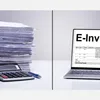In post-Covid era, can digital maturity of MSMEs be a measure of creditworthiness?
Meghna Suryakumar, Founder & CEO, Crediwatch, says the increased digital footprint of MSMEs gathered by considerable private and public data (consensual) enables lenders to conduct better credit risk modelling.
Today, no single sector is untouched by the massive transformation brought on by the global pandemic, and micro, small and medium enterprises (MSMEs) are no different. In fact, as the pandemic continued and lockdown restrictions became more stringent, more and more consumers were pushed to take the digital route to conduct their businesses. This gave the pace of formalisation and digitalisation of MSMEs a huge boost.
From strengthening digital payments, managing distance transactions, and promoting direct-to-consumer (DTC) models to increasing digital commerce, the immediate benefits of digital interventions are vast. But, on the bright side, this rapid digital adoption by both customers and MSMEs has opened doors that were unthinkable until a few years ago.
How is digitisation bringing financial transparency and inclusivity?
According to reports, as of Nov 2021, India has approximately 6.3 crore MSMEs. All these businesses are today leveraging cutting-edge digital technologies to avail all sorts of opportunities. By taking the transactions and payments online, businesses increase their financial transparency and provide comprehensive cash flow insights to potential investors or creditors. The increased digital footprint of MSMEs gathered by considerable private and public data (consensual) enables lenders to conduct better credit risk modelling.
A few years ago, the only cash flow visibility business could show at the end of a financial year was annual report filing. However, things are different today.
Over the past few years, GST payments, transaction flows, Provident Fund (PF) payments and other reliable documentation can be accessed on a month-on-month basis. These actionable insights enable lenders (banks or other financial institutions) to assess MSME creditworthiness better.
Undoubtedly, the newfound digital maturity will also help MSMEs get the much-needed credit to strengthen their business over time.
What’s in store for the future?
Globally, one of the most prominent constraints faced by MSMEs is access to cheap credit. For ages, this sector has been duelling with the credit gap exploited by the traditional modes of assessing creditworthiness. Conventional creditors like banks considered these businesses as high-risk lenders due to their lack of financial documentation, uncertain business plans, and no collateral or past records. As a result, they preferred giving credit to larger firms. In fact, in 2021, several leading news outlets reported that traditional lending institutions (banks) have only deployed 1.1 percent more credit to MSMEs in August vis-a-vis the previous year.
ALSO READ

However, today digitisation and massive real-time data have made it possible for banks and other financial institutions to assess the creditworthiness of MSMEs through unconventional mediums.
In the years ahead, mobile usage, cloud-based services, big data analysis, and new-age technologies will continue to flourish. It will give ample opportunities to underserved MSMEs in need of credit to approach banks and NBFCs. Many banks and financial technology institutions have already started joining forces to assess MSME creditworthiness in a new light. Digitisation also enables banks and other lending institutions to expand their customer base by simply plugging in fintech. This is a brand-new era of growth, where MSMEs can effectively eliminate financial constraints from the equation.
Edited by Anju Narayanan
(Disclaimer: The views and opinions expressed in this article are those of the author and do not necessarily reflect the views of YourStory.)








